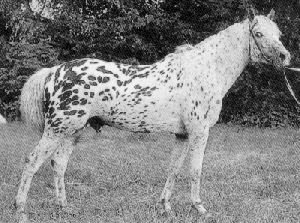
In the typical Altai the head is average in length, large and somewhat coarse; the neck is fleshy; the back is long and slightly dipped; the croup is well developed, the legs are short and properly set. Occasional defects in conformation include sloping pasterns and bowed hocks. The average measurements (in cm) are: stallions - height at withers 140, chest girth 170, cannon bone girth 19; mares: 137, 170 and 18 respectively. The colors are chestnut, bay, black and gray, sometimes spotted.
The Altai is highly adapted to year-round pasture grazing. Altai crosses with pure breeds have a good performance. They are larger, more massive and stronger than the Altai while retaining their sound health and are undemanding as regards their management. Activities are underway to develop a new meat producing breed by crossing the Altai with the Lithuanian, Russian and Soviet Heavy Draught. These crossings were made after the revolution as well as under the Soviet government, and then the crossbred horses were bred "in purity."
This breed were reared in the Altai Mountains for many centuries and are well adapted to its harsh environment. Horses have always been important to the tribesmen and nomads in this mountainous region, requiring horses with a strong heart, lungs, muscles, and tendons along with very hard feet. A sure-footed horse is important, as they must travel over steep mountain trails cut from the rock and cross fast-moving streams and rivers. The development of the Altai has resulted in the creation of a hardy animal which is indispensable to the people who depend on it.